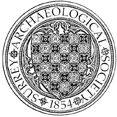Land at Headley Drive, Tadworth
Evaluation by J Robertson of SCAU for SCC’s Property Services Dept, of land to the north east of a known Anglo-Saxon cemetery, produced no evidence for burials. A few features, mainly ditches and gullies, were recorded, only one of which produced dating evidence - a sherd of late 12th/early 13th pottery. A number of stray finds were also recovered, including a sherd of Bronze Age pottery, pieces of struck and burnt flint and a sherd of Late Saxon pottery.


